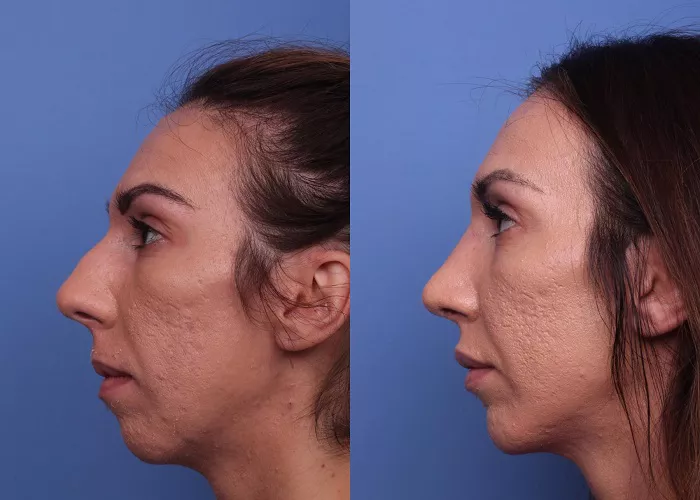Chin surgery, medically known as genioplasty or chin augmentation, is a cosmetic procedure designed to reshape or enhance the chin’s appearance. While many individuals seek this surgery for aesthetic reasons, it’s essential to understand the potential risks and benefits involved. This article provides a comprehensive overview of chin surgery, its types, associated risks, and considerations to help you make an informed decision.
What Is Chin Surgery?
Chin surgery encompasses procedures aimed at improving the shape, size, or position of the chin. The primary goals include:
- Enhancing facial harmony: Balancing the chin with other facial features.
- Correcting a receding or protruding chin: Adjusting the chin’s projection for a more balanced profile.
- Addressing congenital or injury-related deformities: Restoring normal appearance and function.
Types of Chin Surgery
- Chin Implants (Alloplastic Augmentation): Involves inserting a synthetic implant to increase chin projection. Materials commonly used include silicone and porous polyethylene.
- Sliding Genioplasty: A surgical procedure where a portion of the chin bone is cut and repositioned to correct alignment or projection issues.
- Non-Surgical Augmentation: Utilizes dermal fillers to temporarily enhance the chin’s appearance without surgery.
Potential Risks and Complications
While chin surgery is generally safe when performed by qualified professionals, it’s not without risks. Understanding these potential complications is crucial.
Common Risks
- Swelling and Bruising: Temporary and typically resolves within a few weeks.
- Pain and Discomfort: Manageable with prescribed medications.
- Infection: Rare but possible; may require antibiotics or implant removal in severe cases.
- Numbness or Altered Sensation: Especially in the lower lip and chin area; usually temporary but can be permanent in rare cases.
- Scarring: Minimal with intraoral approaches; external incisions may leave small scars.
Specific Complications
Implant-Related Issues
- Implant Migration: The implant may shift from its original position, leading to asymmetry.
- Bone Resorption: The underlying bone may erode over time due to pressure from the implant.
- Extrusion: The implant may protrude through the skin or mucosa, necessitating removal.
Nerve Damage
- Mental Nerve Injury: Can result in numbness or tingling in the lower lip and chin.
- Marginal Mandibular Nerve Damage: May cause asymmetry in lower lip movement.
Aesthetic Concerns
- Asymmetry: Uneven appearance due to implant positioning or healing variations.
- Overcorrection or Undercorrection: The chin may appear too prominent or insufficiently enhanced.
- Unnatural Appearance: Especially if the implant size or shape doesn’t harmonize with facial features.
Factors Influencing Risk
Several factors can impact the likelihood of complications:
- Surgeon’s Expertise: Choosing a board-certified and experienced surgeon reduces risk.
- Surgical Technique: Proper implant placement and secure fixation are crucial.
- Patient’s Health: Smoking, certain medical conditions, and poor oral hygiene can increase complications.
- Postoperative Care: Adhering to aftercare instructions promotes healing and reduces infection risk.
Non-Surgical Alternatives
For those hesitant about surgery, non-invasive options are available:
Dermal Fillers
- Procedure: Injectable fillers, like hyaluronic acid, are used to enhance chin projection.
- Advantages: Minimal downtime, immediate results, and reversible.
- Limitations: Temporary effects, typically lasting 6-12 months.
Making an Informed Decision
Before opting for chin surgery:
- Consult a Qualified Surgeon: Discuss goals, expectations, and potential risks.
- Review Before-and-After Photos: Assess the surgeon’s previous work.
- Understand the Procedure: Know the steps involved, recovery time, and costs.
- Consider Alternatives: Evaluate non-surgical options and their suitability.
- Prepare for Recovery: Arrange time off work and support during the healing process.
Conclusion
Chin surgery can significantly enhance facial aesthetics and boost self-confidence. While the procedure carries potential risks, selecting a skilled surgeon and adhering to postoperative care guidelines can minimize complications. Thorough research and consultation are key to achieving satisfactory results.
Related topics:


